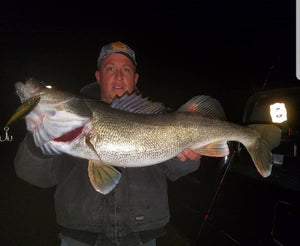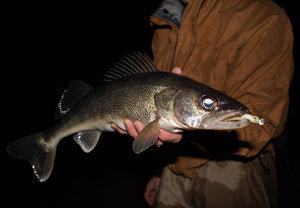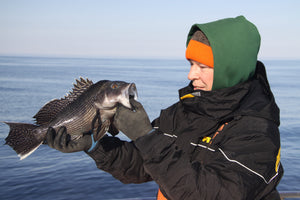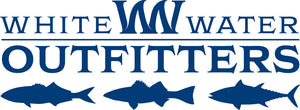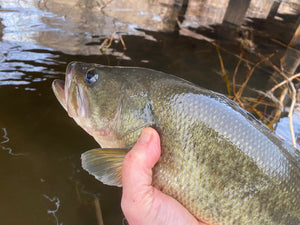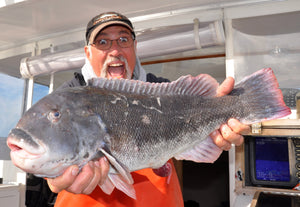Welcome Back Peconic Bay Weaks
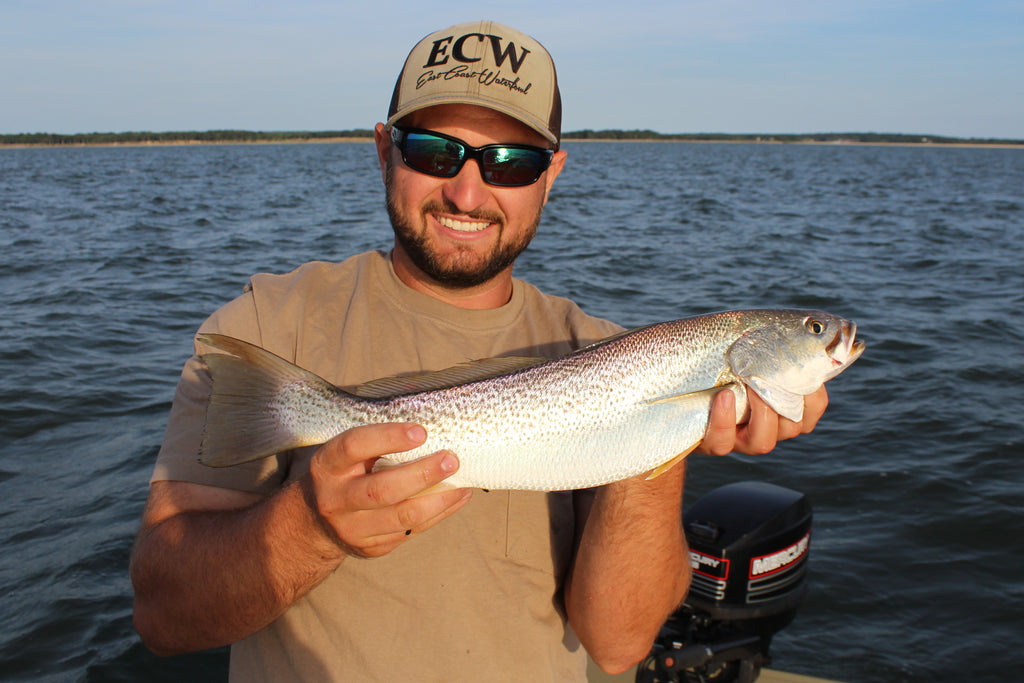
By Tom Schlichter
It had been a while since there was a decent run of weakfish in the waters of Peconic Bay, but the last two years witnessed a fairly solid run of fish set up during May, with action lasting well into June and then picking up again slightly for the fall. While this most recent spat of action with the yellowfins still pales in comparison to the great runs of the late 1970’s and early 1980’s, it was actually pretty consistent. Most of the weaks caught were in the 15- to 22-inch class, but there were a decent number of honest 4-pounders in the mix with a few even topping the 5-pound mark.
To be sure, weakfish catches have been slowly but steadily building over the past few years. Last year’s spring run, in particular, was impressive in such renown Peconic hot spots as Robins Island, Jessup Neck, Southold Bay, Noyack Bay and Cedar Point. A few local sharpies even connected with near-tiderunners while bank fishing with plugs after dark in the North Haven and Sag Harbor area. Time things right, and you can also catch them in late April and early May at Shinnecock Canal as the locks begin to open or close, Hopefully, 2022 will see another solid bite develop with more anglers able to enjoy the thrill of these freckle-back battlers tugging at the end of a line.
What will it take to cash in on this new round of weaks? For starters, you can put away those heavy meat sticks and break out the light tackle. Because of the weak's delicate mouth tissue, a light to medium-light setup with a smooth working drag should be used when conditions permit. Rods should be somewhat "whippy" so that they can work as a cushion against the strong rushes and surges often made by weakfish during the course of battle. Under most conditions, spinning gear is acceptable, but a slight nod still goes to conventional setups if you are fishing from a boat. Most of the time, a 10- to 12-pound-class setup will be sufficient for catching weaks in our bay and shallow water environs. If you need help putting together an outfit, be sure to stop by the shop. We have a great collection of lightweight spinning and conventional inshore jigging rods and reels including Daiwa, Penn, Avet, Shamino, Seigler and other brands that are a perfect match for the size weaks you’re most likely to encounter.

Despite a propensity to be a bit choosey at times, weakfish will respond to a wide selection of natural baits and lures. Squid strips, fish strips and small bucktails in the ½- to 1-1/2-ounce range tipped with any of the above or your choice of Berkley Gulp! work great when bounced along the bottom or jigged with slow lifts slightly above. If considering the Gulp! we suggest their Swimming Mullets, Saltwater Shrimp or Saltwater Jerk Shads. Another great option is a small, ¾- to 1.5-ounce diamond jig or 4-inch Al Gag’s Whip-It Eel tipped with a sandworm or thin strip of squid.
For bank anglers casting after dark, floating or sinking minnow imitations, including Rapala X-Rap Saltwater Slashbaits, Yo-Zuri Mag Darters, and Yo-Zuri Crystal 3D Minnows, are solid selectins. Believe it or not, those old standby 9-inch jelly worms and Salty Dogs, tipped with squid, still catch if you happen to have a few still hiding in your tackle box. To be sure, though, the modern numero uno is probably a 5-inch white or pink Bass Assassin Shad or Berkley Gulp! Saltwater Jerk Shad impaled on a 1/2- to 1-1/2-ounce undressed leadhead or pink S&S Fish Head Bucktail jig.

Rigging up for weakfish varies according to the baits used. For squid, fish strips, clams and sandworms, highlow rigs are a popular choice. Live-liners like to work high hook bottom rigs, slip sinker setups or weightless rigs. Hook selection also varies but octopus or wide gap styles are viable choices. To be sure, though, a simple high-low porgy rig will get the job done with school-sized weaks. As a general rule, most weakfish are caught while drifting, be that along a channel edge, across pocket water, or flats adjacent to deeper water.
Weakfish can hit hard, leaving no doubt that they have taken your bait. They can also pick up an offering with a delicate tap, so you need to always be alert during pursuit. Once hooked, most weaks take off with a forceful initial run. Let the fish work against your reel's drag mechanism and bending rod and it should soon slow down. Trying to "horse in" a freshly hooked weak often results in a broken line or, more likely, the hook ripping from the fish's mouth.

So, if you haven’t targeted weakfish in a decade, now’s the time to get back in the game. In addition to rekindling some sweet memories they’ll also help you create new ones if you bring a youngster or novice angler along. Just keep in mind that no matter how many you catch, you can only creel a single fish per angler each day with a minimum length of 16 inches. All others should be gently and expediently released.
That seems a fair price to pay if it will help this sporty, beautiful and cooperative battler continue to grow more abundant in the years ahead.
- Bryce Poyer

